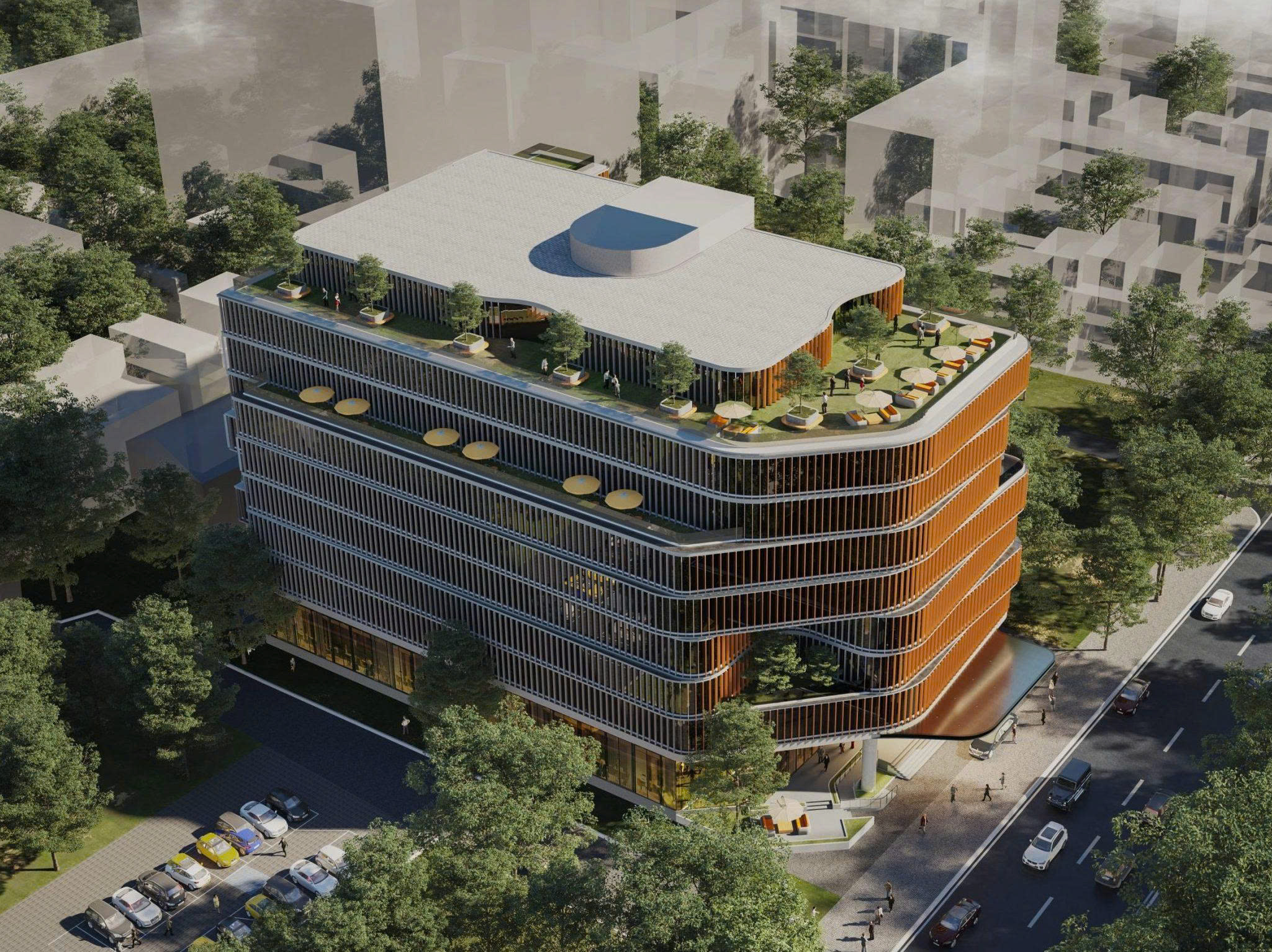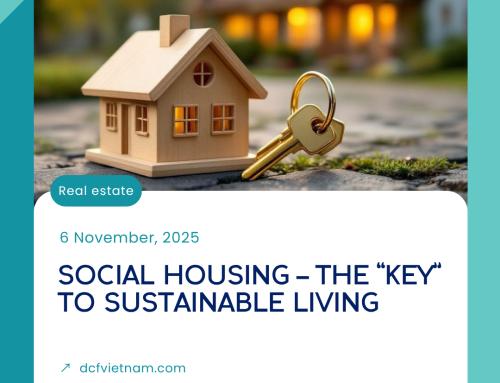
1. Introduction: The green building wave and the need for new valuation approaches
The Sustainable Trend and Vietnam's Green Momentum
Amid increasingly severe climate change, green buildings have become an inevitable trend to create a sustainable living environment. In Vietnam, 2025 marks an important turning point with the rapid growth of projects certified by EDGE, LEED, and LOTUS.
559+
Total Green Buildings
13M m²
Total Certified Floor Area
CO₂ Reduction
Significant Contribution
Currently, the country has more than 559 green buildings, with a total floor area exceeding 13 million m², significantly contributing to the goal of reducing CO₂ emissions.
The Core Challenge for Valuation
The growth of green buildings goes hand in hand with the adoption of renewable energy, especially solar power, to optimize energy efficiency and reduce operating costs. Despite ongoing challenges in legal frameworks, infrastructure, and financing, the clean energy sector continues to expand strongly, serving as a driving force for green buildings and sustainable economic growth.
This raises a crucial question for the valuation industry: How to accurately quantify the sustainable value of green buildings and deliver transparent, objective valuation reports?
2. Green Indicators and Certifications: Integration and Weighting in Asset Valuation
Mastering green indicators is the foundation for appraisers to identify and quantify sustainability factors, thereby developing appropriate valuation models. The most common certifications include:
The first green building certification system in Vietnam, tailored to the country’s climate and construction characteristics. LOTUS evaluates buildings based on energy and water savings, use of eco-friendly materials, improved occupant health, and operational management.
A global benchmark for sustainable design, construction, and operation. LEED assesses buildings on energy efficiency, water management, sustainable materials, indoor air quality, and location.
A certification developed by IFC–World Bank, aimed at cost-effective green buildings. EDGE focuses on achieving at least 20% savings in energy, 20% in water, and reducing carbon emissions from construction materials.
All three systems emphasize energy efficiency, water conservation, and environmental management as the foundation of sustainability. They combine quantitative indicators (such as energy and water savings, carbon reduction) with qualitative indicators (indoor air quality, user health, operational management), offering a comprehensive view of building value. This demonstrates that green certifications not only reflect economic benefits through lower operating costs but also quantify intangible environmental and social values—factors increasingly recognized by markets and investors in the valuation process.
A summary table below presents key indicators and their reference weights (based on common scoring frameworks):
Performance of energy use in design and operation
Efficient use, reuse, and treatment of water
Use of recycled and local materials, waste reduction
Clean air, pollution control, and indoor environmental quality
Proximity to public transport, minimizing environmental impact
Reduction, recycling, and effective waste treatment
In addition, the LOTUS criteria also incorporate indicators tailored to Vietnam’s tropical climate and environment, along along with effective operational management practices, making it highly practical and well-suited for local green building projects.
3. The impact of sustainability on asset value
The sustainable features of green buildings generate economic, social, and environmental values, thereby directly influencing asset value:
Economic benefits: This is the most evident and important impact. Green buildings significantly reduce operating costs thanks to energy and water savings and efficient management, thereby shortening the payback period of the initial investment. The World Green Building Council (WorldGBC) reports that green buildings can increase overall asset value by up to 7% within just five years. With cost-saving advantages and the ability to create superior added value compared to conventional buildings, green buildings are often more attractive in the market, especially to tenants and investors who prioritize sustainability.
4. Valuation of green buildings: Applied methods and practices
The role of green certifications in valuation is to provide a transparent and objective framework, giving appraisers a basis to quantify the intangible value of sustainability factors. However, valuing green buildings is challenging because aspects suchs as energy efficiency or environmental impact are difficult to measure. To ensure objectivity and accuracy, the following methods can be applied:
Incorporating sustainability indicators into comparative method
Appraisers adjust property values based on green factors like energy use, costs, and eco-friendly features to capture sustainability’s market value. Buildings with high energy ratings or LEED certification may be valued higher. However, limited green market data hinders accuracy, so detailed records and tools like the Residential Green and Energy Efficient Addendum help document all sustainable features in the appraisal file, ensuring these benefits are consistently reflected in comparables.
Income approach
The Discounted cash flow (DCF) method incorporates sustainability by increasing income and reducing expenses for green buildings. Lower operating costs and higher rents boost net cash flow and asset value. Studies show green certifications like LEED cut maintenance costs by about 20% and attract higher rents. Upgrading to LEED and EDGE standards can raise market value by 10–20%, proving that adjusting cash flow for sustainability better reflects a green building’s true market value.
AVM (Automated Valuation Models) integrating green data
AVMs apply big data and AI to valuation by integrating green data like certifications, energy ratings, and carbon emissions to quantify sustainability’s added value. They offer speed, consistency, and higher predictive accuracy than traditional methods. However, reliable and extensive green property data is essential—poor data leads to unreliable results. Developing AVMs with standardized green data enables faster, more objective, and consistent valuations of sustainable assets.
5. International and Vietnamese practices
International Market Benchmarks
Many international studies confirm that green buildings bring significant economic benefits. These figures demonstrate that green certification not only provides operational advantages but also significantly increases the value and liquidity of assets:
Up to 11%
Higher Rents (Global)
Up to 11%
Higher Market Value
25% Faster
Transaction Time
In the United States, a study analyzing 20,600 office buildings found that LEED-certified properties achieved rental rates on average about 4% higher, after controlling for location and building age. Another research also indicated that sustainable offices command 7% higher rents in North America, 10% in Asia-Pacific, and over 11% in London. Regarding asset value, the report (Europe) recorded green buildings having market values up to 11% higher, while a study by MIT showed an increase of around 7%. In addition, green buildings typically transact 25% faster than conventional ones, while reducing operating costs by 10–17% within the first five years and reporting nearly 20% lower maintenance costs.
Vietnamese Market Dynamics & Case Studies
In Vietnam, the green building trend is becoming increasingly evident, driven by strong market demand and developer commitment:
HCMC & Rent Premium
- 73% of Grade A office supply in HCMC had achieved green certification (Q2 2025).
- Green offices achieve rental rates about 10% higher than the market average.
- 100% of new projects target green standards.
The market clearly prioritizes certified properties, ensuring high occupancy and superior appeal.
Key Project Success
- Deutsches Haus (LEED Platinum): Fully occupied at high rental rates (around USD 6x/sqm/month).
- Grand Terra 36 Cat Linh (LEED Gold): Attracts international tenants due to 20% energy and 40% water savings.
- Investment payback period is typically 4–5 years through operational savings.
Green status enhances reputation, secures premium tenants, and increases the asset's market value.
Although initial investment costs may increase by 5–15%, green projects generally achieve payback within 4–5 years through operational savings, while also enhancing reputation, securing premium tenants and international investors, and thereby increasing the market value of the asset.
6. Conclusion
Sustainability certifications and indicators are no longer just technical standards; they are gradually becoming decisive criteria for the value and competitiveness of real estate. To advance green building valuation, coordinated efforts are needed:
State management agencies:
Need to improve the legal framework, issue technical standards and guidelines on the design, construction, and operation of green buildings to create a consistent basis for valuation. At the same time, a national, publicly accessible database—regularly updated with information on green projects, costs, operational performance, and transactions—should be developed to enhance transparency and reliability. The government should also implement financial incentives such as tax exemptions, reduced land rents, and green credit support for projects with recognized certifications, accompanied by strict oversight to ensure preferential capital reaches the right targets. In parallel, stronger inspection and disclosure requirements on energy consumption and emissions will help prevent “greenwashing,” create a transparent and fair market environment, and enable sustainable value to be reflected accurately.
Appraisers and enterprises:
Need to proactively strengthen professional capacity in green building valuation through training, ESG updates, and familiarity with international certifications such as LEED, LOTUS, and EDGE to correctly assess economic and technical benefits. The adoption of digital tools—such as BIM, energy performance simulation, and big data analytics—is necessary to build internal databases, support comparability, and standardize valuation results. Businesses should also be transparent about technical and operational information and cooperate with independent verifiers to validate green indicators, ensuring objectivity. In the long term, standardizing valuation processes and developing official guidelines that integrate ESG require active participation from the valuation industry, thereby enhancing professionalism, reducing result discrepancies, and contributing to a more sustainable real estate market.
As green buildings become increasingly common, applying accurate valuation methods to reflect sustainable value is essential. Fully integrating green indicators not only balances economic benefits with social responsibility but also drives the sustainable development of the real estate market.
AUTHOR &
CONTACT INFORMATION
Ky Le
Analysis support
REFERENCES
DISCLAIMER
This content is the product of the author and does not reflect the views or stance of DCF Vietnam Corporation. Furthermore, this content is not intended to create a valuer-client relationship, does not constitute valuation/consultation, and does not replace professional valuation/consultation services. Actual and specific situations or assets require consultation with a professional valuer before taking any action related to the subject matter discussed herein.





